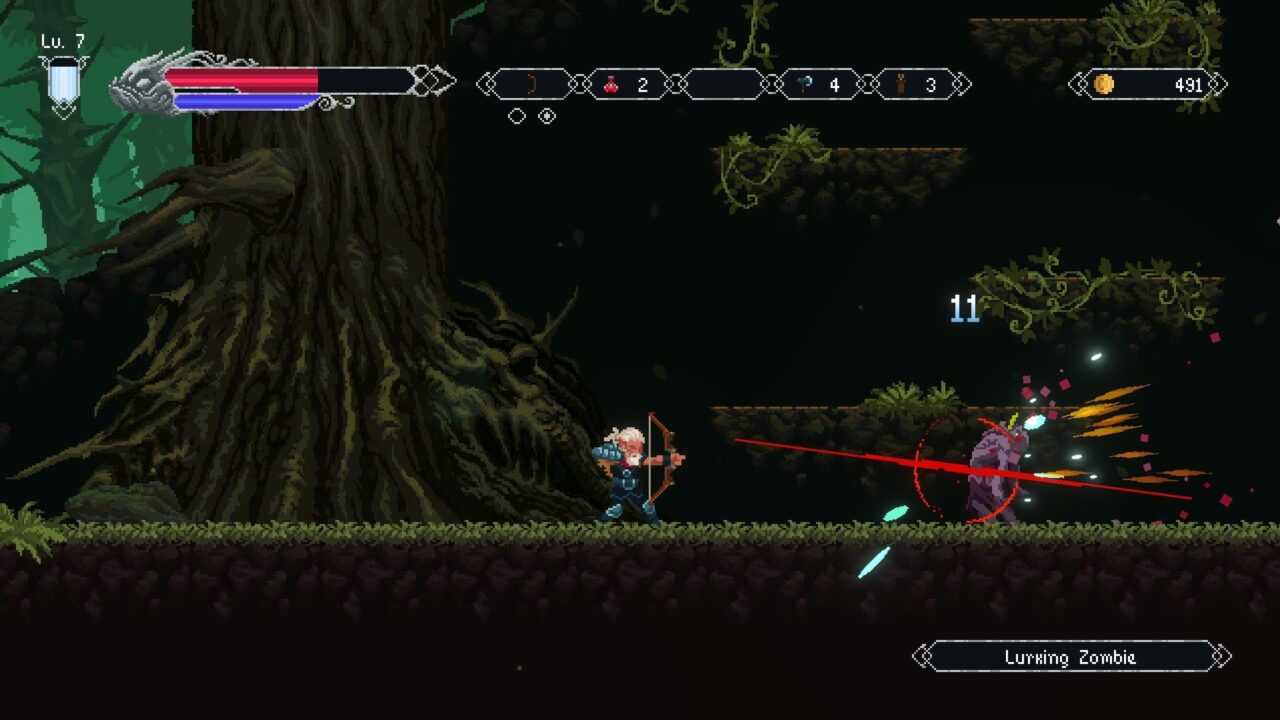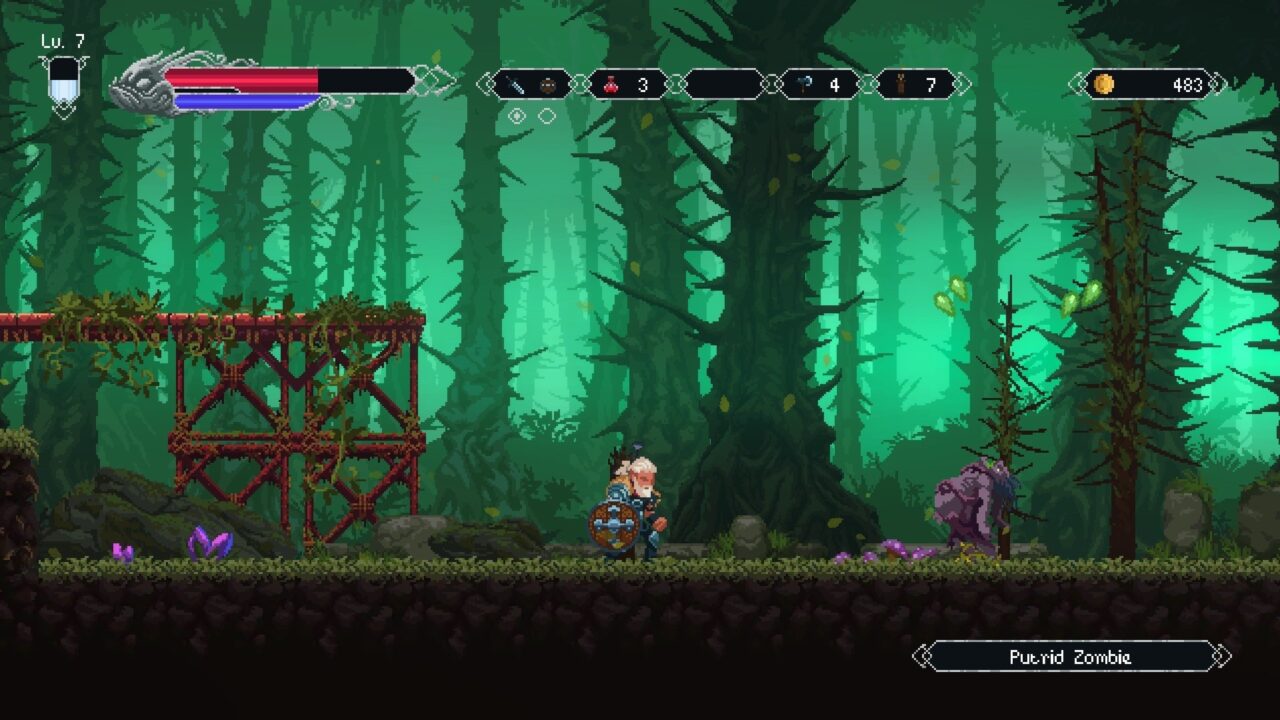Elderand Review: A Satisfying Monster-Slaying Action Platformer

Developed by Mantra and Sinergia Games
Published by Graffiti Games
Available on PC and Nintendo Switch
MSRP: $19.99
Games such as Dead Cells have been important in reminding players of the more compelling qualities of the 2D action platformer, and its horror-tinged themes certainly made it a winner around these parts. So taking that blueprint and tweaking it here and there sees Mantra and Sinergia Games produce Elderand. Where it tweaks is crucial to carving out its own identity.
The biggest ways it does that is to lean harder into its RPG elements and perhaps of more interest here, go a bit harder on the horror.
The plot is fairly typical on the surface. A land is blighted by some great corrupting evil, and you are the blank-slate savior who will ultimately seek to uncover the reason behind it all and vanquish whatever lies at the heart of it. Of course, it’s all about the execution, and Elderand almost executes its sinister lore as well as its protagonist executes the monsters they face.
Helping flesh out this lore is Elderand’s decaying world and inhabitants. The 2D sprite-style visuals are a treat. Vibrant, detailed, and varied in their depiction of otherwise well-established vistas and biomes. The grisly combat consequences especially shine through here. I have yet to get tired of seeing heads chopped off and continue rolling sans body. The monsters are well-realized and communicate their snarling, beastly malice with some impressive animation work. The intention is for cosmic horror monstrosities, and to that end, the remit has been successfully fulfilled. They’re a distinct bunch of nasties that look best when you’ve cleaved them in two. The more humanoid foes also impressed with the fluidity and unpredictability of their movement. They are naturally, not quite as exciting to look at though.

I will say that, at first, Elderand feels a tad slow and clunky in play. Part of that is down to expectations based on how it looks and what it looks like. The truth is Elderand is a game with a more measured pace that isn’t afraid to put on the afterburners when it matters, and it has more strategy to its battles than is apparent, to begin with. For instance, early on there’s an enemy type that spits acidic bile at range, but lunges if you get too close. It’s an awkward foe to figure out, and I got frustrated by it more than once, but once the rhythm is learned, it becomes a delectable dance of death that culminates (most of the time anyway) with the beast’s head looping into the air and thunking to the ground.
The range of attacking options is interesting. You can juggle between a main weapon (swords, whips, etc) and a ranged weapon (such as bows), with the latter having limited ammo, but there are extra attacks you can add through magic and weaponry. A dash allows the player to close the distance or create it where necessary, and a shield blocks one or two blows before leaving you vulnerable. The scarcity of certain attacking items helps to keep you on your toes, as does the equally rare health pickups. It’s in this side of Elderanc that things play out something akin to Salt and Sacrifice or Blaspemhous than a Dead Cells.
If there’s a complaint to be made about the combat, it’s that it isn’t always consistent in its quality. For as much of the game is about learning and understanding its nuances, there are moments where it simply baffles and frustrates with erratic fight design. I can think of one boss in particular that felt more about luck than knowledge and muscle memory. At least it’s a rarity and not exactly outright unfair, which can often be the consequence of such issues in games like this.
One of the nice touches in Elderand is its ritual sites. Here, you can sacrifice some of your blood (health) to receive a nice trinket that may aid your journey. It’s random, so there’s an element of gambling on the outcome, but it’s a nice gamble to have.

The traversal is decent Metroidvania-style stuff, with platforming backtracking, and secrets galore. It sort of feels secondary to the combat at times, at least until certain tools are unlocked to get into new places, but it’s solid enough to hang with the rest of the game.
Everything comes together well enough to keep scratching that exploration/discovery/combat cycle itch consistently enough that you want to see what’s next. The answers aren’t always surprising, but they tend to be satisfying. Elderand makes a place for itself at the table of modern action platformers, and with that delightfully grisly horror edge, it manages to stand out.
Check out outer horror game reviews, interviews, and editorials on DreadXP.
Categorized:Reviews

